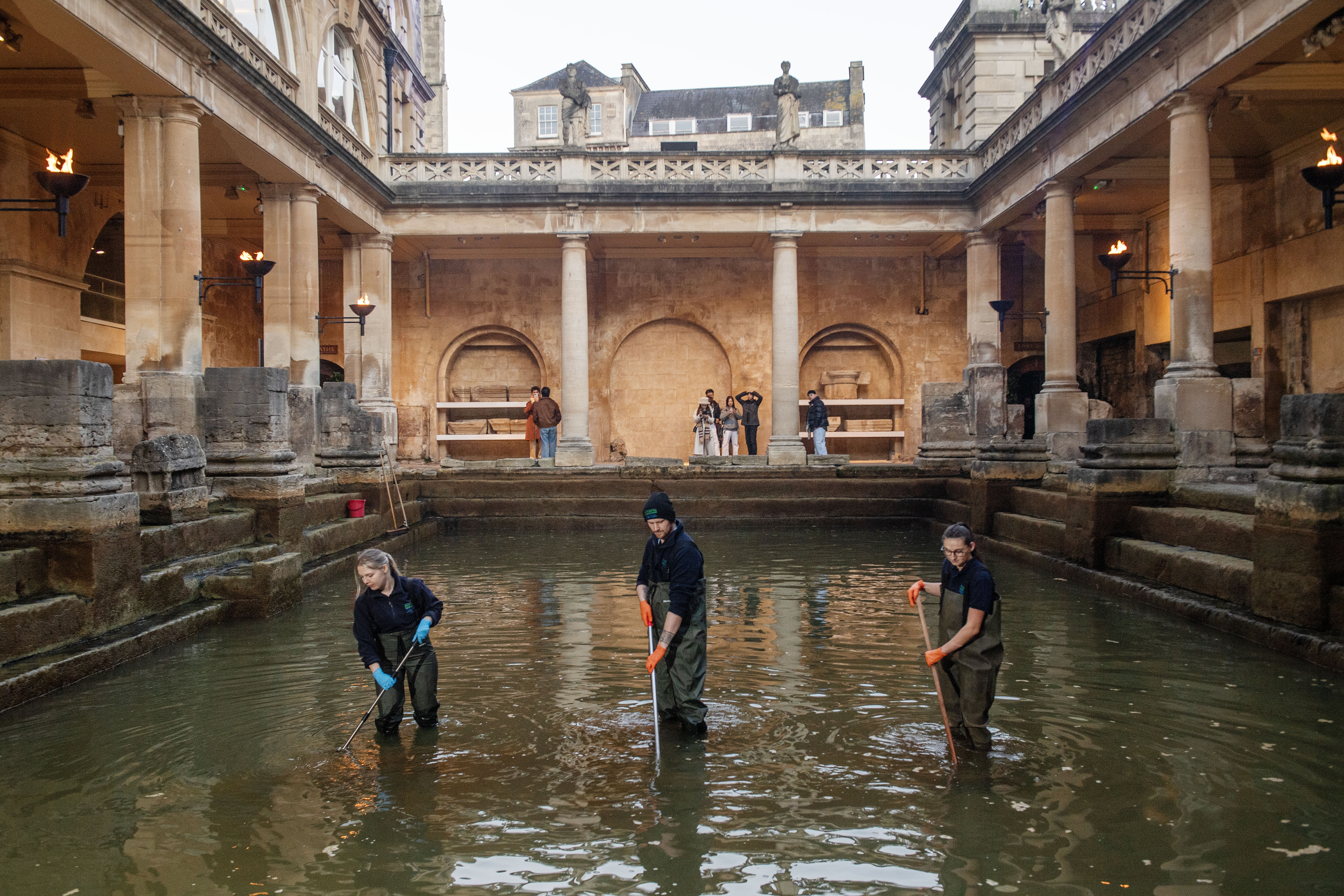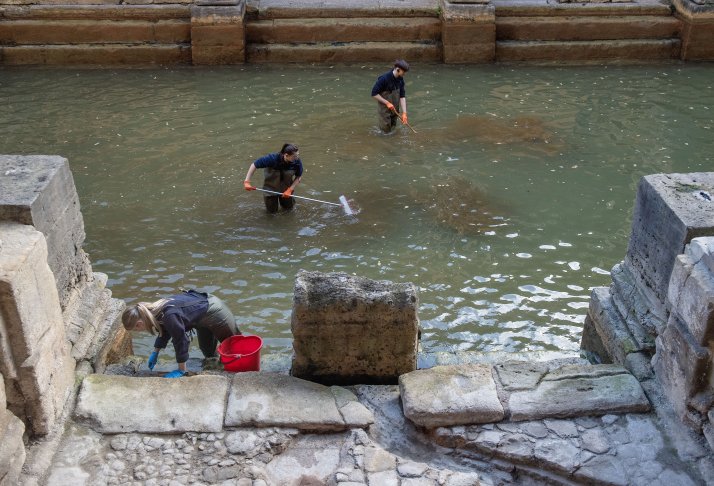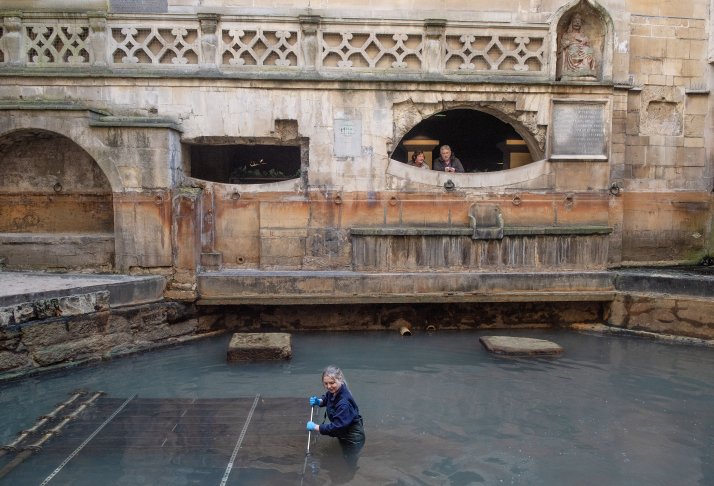
The Great Bath is the magnificent centrepiece of the Roman Baths complex. Built two thousand years ago, it's a massive pool lined with 45 sheets of lead, and filled with naturally occurring hot spa water. It would have once stood in an enormous barrel-vaulted hall that rose to a height of 20 metres. Now open to the elements, the Great Bath needs to be emptied and cleaned on a regular basis, even though it is no longer used for bathing.
Our Operations Team manages the process of draining, cleaning and refilling the Great Bath. In some stages they still make use of the Roman infrastructure - proving that Roman engineering was built to last.
Day One
8.00am: We start off with the initial draining of the King’s Spring where the hot water rises. After draining, the empty Spring chamber is then cleaned with hoses and brushes. Algae grows quickly in the hot spring water, so this is swept away too. The Energy Exchange Blades that are used to heat our buildings are hosed down and checked for corrosion.
10.00am: The Great Bath sluice paddle in the northeast corner is removed and the Roman sluice gate which retains the water in the Great Bath is lifted, allowing the water to flow out. This flow enters the huge Roman drain that takes water from the Spring to the river. This is a method which hasn’t changed for two thousand years!
11.00am: The flow from the King's Spring to the Great Bath is stopped, diverting the water into a Roman drain. This water flows directly along the drain for half a kilometre and discharges into the nearby River Avon. It journeys through the museum where you can see it flowing through a glass floor beneath your feet. The King's Spring is then re-filled with hot water rising from the ground below. This only takes a couple of hours.
Midday - 18.00: The Great Bath takes several hours to drain. It is a controlled process because if all the water went out at once, it would, in combination with the flow from the Spring, flood the drain entirely. Around 500 cubic metres flows out through the sluice. As the water level reduces, the Operations Team staff start climbing down the original Roman steps into the Great Bath and begin to clean down the sides with soft brushes. This is a gentle operation to ensure that they don't damage the Roman stonework.
This process takes place during normal opening hours in full view of the visiting public and most visitors enjoy the spectacle.
18.00: Assuming there are no blockages in the drain, and a low water level in the River Avon allows the flow to move quickly, water in the Great Bath should now be at a suitable level for more staff to enter wearing wellington boots. They start to clean the bottom of the bath and break up the algae using brushes and sponge swimming pool brushes. A water hose is also used to assist with washing down the sides. Again, this is a careful operation as the lead sheets lining the base of the bath are not in perfect condition.
1800: Once the visitors have left for the day, a pump is set up and used to help remove the final residues of the water and algae. This sometimes continues into the evening.
Day Two
7.00am: The Roman Baths Collections team complete a visual inspection of the Great Bath by checking the condition of the stonework and lead sheets. They also remove any weeds growing in the stonework.
7.00am: The paddle is put back in place and the sluice gate is closed, prior to the flow being re-instated from the King's Spring to the Great Bath. The Great Bath now begins to fill back up, and will continue doing so for the rest of the day, possibly into a third day.
In between the draining and cleaning of the Great Bath which normally takes place around four times a year, the surface of the water is regularly swept and hosed down, usually each morning before opening. This clears any floating algae that may rise to the surface and keeps it in pristine condition for our visitors.
Images: Zachary Culpin/BNPS








